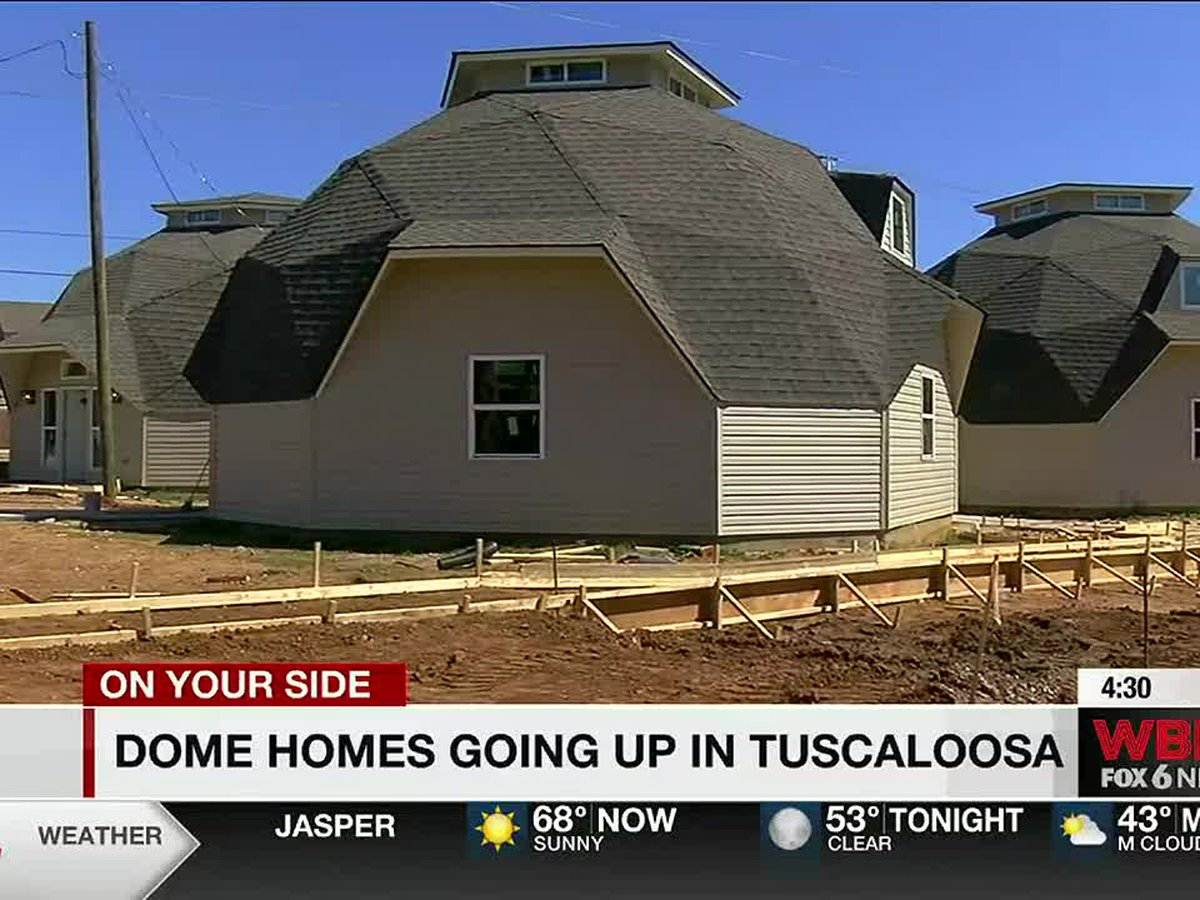Can You Tornado Proof A House? Well, that’s a question that’s been on our minds lately. With severe weather events becoming more frequent and intense, it’s crucial to ensure our homes can withstand the destructive forces of a tornado. But is it really possible to tornado proof a house?
The short answer is yes, to some extent. While it’s virtually impossible to make a house completely tornado-proof, there are measures we can take to significantly enhance its resilience. For starters, reinforcing the structure by installing impact-resistant windows, strengthening the roof with hurricane clips or straps, and securing the foundation can go a long way in minimizing damage. Additionally, considering the use of advanced roofing materials, such as metal or synthetic shingles, can provide added protection against flying debris. It’s also important to create a safe room or storm cellar within the house, where occupants can seek shelter during a tornado. These rooms should have sturdy walls and a reinforced door to withstand the high winds.
Of course, it’s vital to remember that tornadoes are incredibly powerful and unpredictable forces of nature. While these measures can help reduce the vulnerability of our homes, there’s no foolproof way to guarantee complete safety. So, while we can certainly take steps to tornado-proof our houses, it’s equally important to stay informed, have a plan, and be prepared to take immediate action when severe weather strikes.
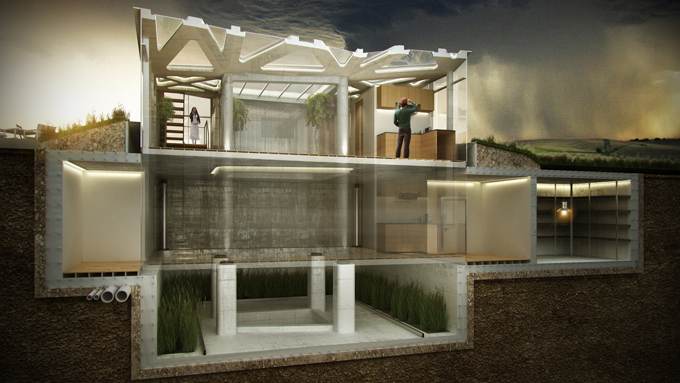
This image is property of www.10design.co.
Understanding Tornadoes
Tornadoes are devastating natural phenomena that can cause immense destruction and loss of life. It is crucial to understand the formation and categories of tornadoes, as well as their impact, in order to effectively mitigate their risks.
Tornado Formation
Tornadoes typically form within severe thunderstorms when there is a unique combination of atmospheric conditions. Warm, moist air rises rapidly, encountering cooler, drier air, which creates instability. This instability, combined with wind shear and a rotating updraft, can lead to the formation of a tornado funnel cloud.
Tornadoes can vary significantly in size and strength. While most tornadoes are relatively small, with widths of less than 100 meters, some can grow to several kilometers in diameter. The wind speeds within a tornado can exceed 300 miles per hour, causing catastrophic damage.
Tornado Categories
Tornadoes are classified into categories based on the Enhanced Fujita (EF) scale, which assesses the extent of damage caused by the tornado. The EF scale ranges from EF0, representing weak tornadoes causing minimal damage, to EF5, which signifies violent tornadoes capable of leveling well-built structures.
Understanding the categories of tornadoes is essential for assessing their potential impact on buildings and infrastructure. It allows engineers and architects to design structures that can withstand the forces exerted by tornadoes of different strengths.
Impact of Tornadoes
The impact of tornadoes can be devastating. They can leave behind a trail of destruction, destroying homes, uprooting trees, and damaging critical infrastructure. Tornadoes can also result in the loss of lives and leave survivors traumatized.
Apart from the immediate damage caused by the high winds and flying debris, tornadoes can have long-term consequences on communities. These include psychological effects, economic burdens, and the challenges of rebuilding homes and communities from scratch.
Understanding the true impact of tornadoes underscores the importance of taking proactive measures to mitigate the risks associated with these destructive forces of nature.
Assessing Tornado Risks
Living in areas prone to tornadoes makes it crucial to understand and assess the risks involved. By identifying tornado-prone areas, analyzing building codes, and evaluating structural vulnerabilities, individuals and communities can better prepare and protect themselves.
Tornado Prone Areas
Certain regions are more tornado-prone due to their geographical location and weather patterns. The central United States, commonly known as Tornado Alley, experiences a higher frequency of tornadoes compared to other parts of the country. This includes states such as Oklahoma, Kansas, and Texas.
It is essential for residents in these areas, as well as in other regions prone to tornadoes, to be well-informed about the potential risks and to take appropriate measures to protect themselves and their properties.
Analyzing Building Codes
Building codes play a crucial role in ensuring the safety and resilience of structures against natural disasters, including tornadoes. Properly analyzing and implementing building codes specific to tornado-prone regions can significantly reduce the risks associated with high winds and flying debris.
Efforts to improve building codes often include considerations such as enforcing wind resistance requirements for materials, strengthening foundations, and implementing construction techniques that enhance structural integrity. Conducting regular reviews and updates of building codes is vital to account for advancements in engineering and architectural practices.
Evaluating Structural Vulnerabilities
Assessing the structural vulnerabilities of buildings is imperative when it comes to tornado preparedness. Conducting detailed evaluations to identify potential weak points allows for targeted improvements and reinforcements.
Common structural vulnerabilities that need to be addressed include inadequate roof-to-wall connections, weak garage doors, and unsecured windows. By identifying and rectifying these vulnerabilities, the structural integrity of buildings can be significantly enhanced, reducing the risk of damage or collapse during tornado events.
Building Design Considerations
When it comes to tornado preparedness, designing buildings with specific considerations for wind loads, foundations, and roofing materials is essential. Incorporating these design principles can greatly enhance a building’s resilience against tornadoes.
Wind Load Analysis
Wind load analysis involves assessing the forces exerted by strong winds on a structure. By conducting thorough wind load analyses during the design phase, engineers can determine the appropriate materials and construction techniques required to withstand tornado-strength winds.
Structural elements such as wall cladding, roof systems, and window assemblies can be specifically designed or selected to withstand the anticipated wind forces. This ensures that the building remains intact and minimizes the potential for structural failure during a tornado event.
Foundations and Anchoring
A sound foundation is critical for the stability of any structure, especially in tornado-prone areas. Building foundations should be designed and constructed to withstand the uplift and lateral forces exerted by high winds.
In addition to robust foundation design, anchoring the building to the foundation can provide additional stability. Methods such as anchor bolts, tie-downs, and reinforced concrete can effectively secure the building to the ground and prevent it from being lifted or displaced by tornado winds.
Roofing and Siding Materials
The selection of appropriate roofing and siding materials is vital in minimizing tornado damage. Impact-resistant materials provide an added layer of protection against flying debris, one of the primary causes of infrastructure damage during tornado events.
Metal roofing, for example, offers increased resistance to wind forces and can withstand the impact of debris better than traditional roofing materials. Similarly, durable siding materials, such as fiber cement or concrete panels, can help mitigate damage caused by high winds and flying objects.
By choosing the right roofing and siding materials, buildings can better withstand the forces exerted by tornadoes, ensuring the safety of occupants and minimizing repair and rebuilding costs.
Reinforcing Structural Elements
Reinforcing structural elements within buildings is an effective way to enhance their resilience against tornadoes. Strengthening walls, installing impact-resistant windows, and reinforcing roofs are critical measures in creating tornado-resistant structures.
Reinforced Walls
Wall reinforcement involves enhancing the load-bearing capacity of exterior walls to withstand the pressure differentials caused by high winds. Techniques like adding reinforcing beams, using thickened wall sections, or integrating steel frames can significantly improve wall strength and stability.
Reinforced walls can better resist the lateral forces exerted by tornado wind speeds and flying debris, reducing the risk of collapse and protecting the integrity of the structure.
Impact-Resistant Windows
Windows are particularly vulnerable during tornado events due to the potential for high-wind-driven debris impact. Installing impact-resistant windows, constructed with reinforced glass or shatter-resistant laminates, helps prevent the rupture and penetration of windows.
These windows are designed to withstand significant impact forces and can provide an effective shield against debris propelled by tornado-strength winds. By protecting windows, the risk of interior damage and injury caused by flying glass shards can be significantly reduced.
Enhancing Roof Strength
Roof structures are susceptible to significant damage during tornadoes, which can compromise the overall integrity of a building. Enhancing roof strength through various means, such as using truss bracing, reinforced connections, or designing roofs with higher wind uplift ratings, is essential.
By reinforcing the roof structure, the likelihood of roof failure or detachment during tornado events can be greatly reduced. This helps maintain the stability of the entire building and minimizes the potential for catastrophic damage.
This image is property of i.insider.com.
Fortifying Doors and Openings
Doors and openings within a building can be potential weak points during tornado events. Fortifying these areas is vital to ensure the overall structural integrity and protect occupants from the strong winds and flying debris associated with tornadoes.
Storm-Resistant Doors
Using storm-resistant doors, specifically designed and constructed to withstand high winds, is crucial in tornado-prone areas. These doors are reinforced with impact-resistant materials, such as fiberglass or steel, and are often equipped with multiple-point locking systems to enhance their stability.
Storm-resistant doors can significantly reduce the risk of failure during a tornado event, keeping the building secure and protecting individuals sheltering inside from wind and debris.
Protective Window Film
Another effective measure to fortify doors and openings is by applying protective window film on glass surfaces. This transparent, adhesive film strengthens windows, preventing them from shattering upon impact.
Window film helps retain the structural integrity of the glass, even if it cracks. This minimizes the risks associated with flying glass shards, enhances occupant safety, and reduces the potential for interior damage caused by wind-driven debris.
Reinforcing Garage Doors
Garage doors are often vulnerable points during tornado events. Weak garage doors can fail, leading to significant damage or destruction of the entire structure.
Reinforcing garage doors with additional bracing, heavier materials, or installing wind-resistant doors can help protect against high winds and flying debris, reducing the risk of structural damage and maintaining the overall integrity of the building.
Implementing Safe Rooms
Safe rooms provide a designated space within a building where individuals can seek refuge during tornado events. These rooms are specifically designed and constructed to withstand the extreme forces associated with tornadoes, offering a high degree of protection to occupants.
Safe Room Designs
Safe room designs focus on creating compact, reinforced spaces that can resist the intense wind loads and impact forces generated by tornadoes. They are constructed using high-strength materials, such as reinforced concrete or steel, and are engineered to meet stringent safety standards.
Safe room designs should also incorporate proper ventilation systems and communication devices to ensure the well-being and connectivity of individuals seeking shelter during a tornado event.
Construction Materials
The selection of appropriate construction materials is crucial for the successful implementation of safe rooms. Reinforced concrete provides excellent protection against tornado forces, offering resilience and durability.
Steel is another common material used in safe room construction due to its strength and ability to withstand high-velocity wind impacts. By utilizing these materials effectively, safe rooms can provide occupants with a secure refuge during tornado events.
Air Ventilation and Communication
Safe rooms must have adequate ventilation to ensure a continuous supply of fresh air for the occupants. Ventilation systems can be designed to prevent the entry of debris or harmful contaminants while maintaining a safe environment inside the room.
Additionally, communication devices such as two-way radios, cell phones, or landlines should be readily available in safe rooms to enable occupants to stay connected with emergency services and inform others of their situation.
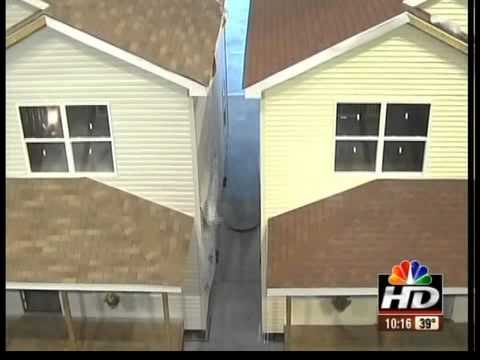
This image is property of i.ytimg.com.
Securing Outdoor Features
While protecting the interior of a building is essential, securing outdoor features can also significantly reduce the risks associated with tornadoes. By addressing loose objects, implementing impact-resistant landscaping, and ensuring proper drainage systems, the potential for damage can be minimized.
Securing Loose Objects
Outdoor objects, such as patio furniture, garden tools, or toys, can become dangerous projectiles during a tornado. Securing or storing these objects in a safe location before severe weather strikes is essential in mitigating potential risks.
Anchoring or fastening loose objects to the ground or storing them in a secure shed or garage can prevent them from being airborne during tornado events, reducing the risk of property damage and injury caused by flying debris.
Impact-Resistant Landscaping
Choosing appropriate landscaping materials and designs can help minimize tornado damage. Opting for impact-resistant materials, such as gravel or shredded bark, instead of small rocks or mulch, reduces the risk of these materials becoming airborne projectiles.
Additionally, avoiding extensive plantings of trees with weak branches or shallow root systems near buildings can help prevent tree damage or uprooting during high-wind events. Proper landscaping practices play a crucial role in protecting both the structure and surrounding areas from tornado-related hazards.
Adequate Drainage Systems
Proper drainage systems are essential to prevent flooding and water damage during tornado events. Ensuring that gutters, downspouts, and drainage pathways are clear of debris and functioning effectively helps redirect rainwater away from the building.
By maintaining adequate drainage, the risk of water infiltration and subsequent damage to the building’s foundation, walls, and interior spaces can be significantly reduced. Well-designed drainage systems contribute to the overall resilience of a structure when faced with the challenges of severe weather.
Emergency Preparedness Plans
Developing comprehensive emergency preparedness plans is vital to effectively respond to tornado threats. These plans should include tornado warning systems, evacuation routes, and expedient access to emergency supply kits.
Tornado Warning Systems
Tornado warning systems provide essential alerts to individuals and communities when tornadoes are imminent. These systems typically include sirens, weather radios, smartphone applications, or television and radio broadcasts.
Familiarizing oneself with the tornado warning systems in their area and understanding how to interpret these warnings can help individuals take immediate action and seek shelter during tornado events.
Evacuation Routes
Establishing clear and accessible evacuation routes allows for a swift and organized evacuation when necessary. Individuals should be aware of the designated evacuation paths and safe locations within their community, such as designated storm shelters or safe rooms.
Mapping out evacuation routes and communicating them to household members or employees ensures that everyone knows how to safely navigate to sheltered areas during tornado events. Regular drills and practice exercises can further enhance preparedness and response capabilities.
Emergency Supply Kits
Every household or workplace should have a well-stocked emergency supply kit tailored to sustain basic needs during and after tornado events. These kits typically include essential items such as non-perishable food, water, flashlights, batteries, first aid supplies, and personal hygiene items.
Maintaining these kits in easily accessible locations ensures that individuals have necessary provisions in case of extended power outages or limited access to essential services. Regularly reviewing and replenishing supplies is crucial in maintaining the effectiveness of emergency preparedness kits.
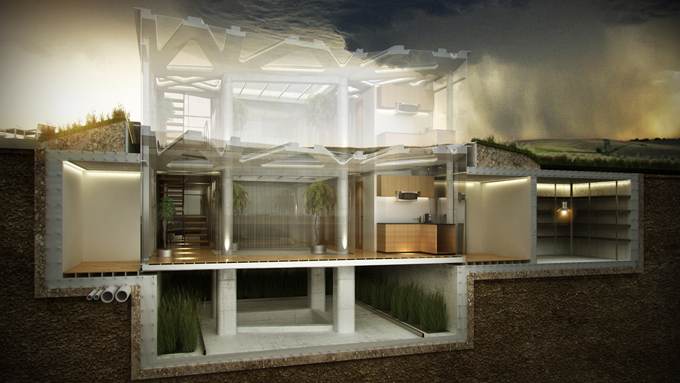
This image is property of www.10design.co.
Insurance Coverage and Safety Measures
Alongside proactive measures to mitigate tornado risks, understanding insurance policies and implementing safety measures for occupants are equally important aspects of tornado preparedness.
Understanding Insurance Policies
Reviewing and understanding insurance policies is essential to ensure adequate coverage for potential tornado-related damages. Homeowners should consult with their insurance providers to fully comprehend the scope of their coverage, deductible amounts, and specific provisions related to tornado damage.
By being well-informed about their insurance policies, individuals can make necessary adjustments or obtain additional coverage to protect their properties and possessions from the financial impact of tornado events.
Documenting Home Improvements
Homeowners should document any improvements or modifications made to their properties that enhance tornado resilience. Keeping records of implemented safety measures, such as reinforced walls, impact-resistant windows, or storm-rated doors, can be crucial when filing insurance claims after tornado damage.
Detailed documentation, including photographs, receipts, and contractor information, provides evidence of the proactive steps taken to tornado-proof the home. This aids in expediting the claims process and ensuring proper compensation for any damages incurred.
Safety Measures for Occupants
Educating household members or employees about tornado safety measures is vital for their protection. Conducting regular safety drills, discussing emergency procedures, and identifying designated shelter areas within buildings helps prepare occupants for tornado events.
Promoting awareness of the dangers posed by tornadoes and providing guidance on seeking shelter, staying informed through reliable sources, and knowing how to respond during and after a tornado occurrence can save lives and minimize injuries.
Conclusion
While it is not possible to completely tornado-proof a house, implementing various strategies can significantly reduce the risks associated with tornado events. Understanding tornado formation, categories, and their impacts is essential in developing effective preparedness plans and building resilient structures.
Assessing tornado risks, considering building design, reinforcing structural elements, fortifying doors and openings, implementing safe rooms, securing outdoor features, and developing emergency preparedness plans are crucial steps in mitigating tornado risks.
Additionally, understanding insurance coverage, documenting home improvements, and promoting safety measures for occupants play integral roles in tornado preparedness. By combining these efforts and adopting a proactive approach, individuals and communities can enhance their resilience and minimize the potential for devastation caused by tornadoes.
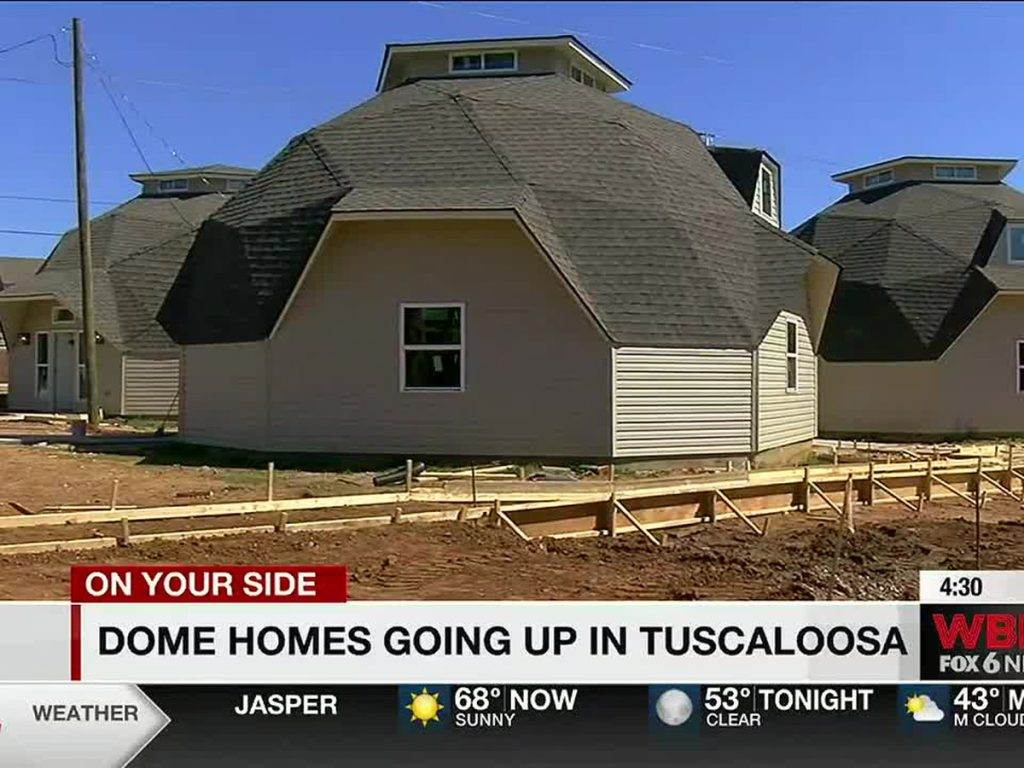
This image is property of gray-wbrc-prod.cdn.arcpublishing.com.
